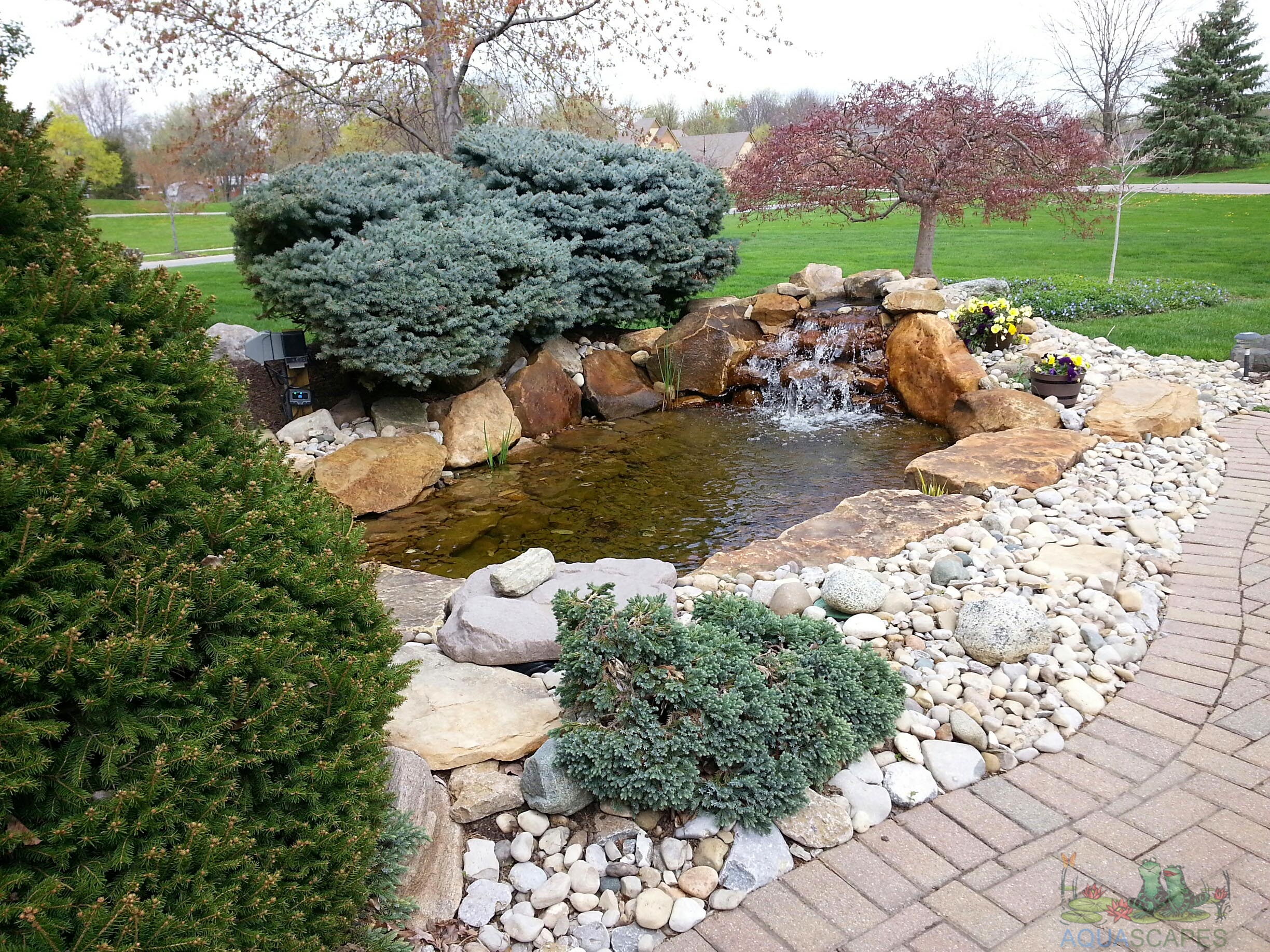[av_textblock size=” font_color=” color=” av-medium-font-size=” av-small-font-size=” av-mini-font-size=” av_uid=’av-l6qomp92′ custom_class=” admin_preview_bg=”]
Designing a Japanese-Inspired Zen Garden with Water Features
Creating a tranquil Japanese-style Zen garden with water features can bring a sense of serenity and harmony to your outdoor space. In this article, we will provide inspiration and tips for designing a Japanese-inspired Zen garden that incorporates water features such as koi ponds, bamboo fountains, and stone water basins. We will explore the principles of balance, simplicity, and harmony that underpin Japanese garden design, allowing you to create a peaceful sanctuary that fosters relaxation and contemplation.
I. Principles of Japanese Garden Design
- Balance (Symmetry and Asymmetry):
- Achieve a sense of balance by incorporating symmetrical and asymmetrical elements in your garden design. Symmetry can be achieved through paired elements, while asymmetry adds a touch of naturalness and organic flow.
- Simplicity (Kanso):
- Embrace simplicity by using a limited color palette and clean lines. Avoid clutter and excessive ornamentation, focusing on essential elements to create a serene and uncluttered environment.
- Harmony (Wa):
- Strive for harmony by creating a cohesive and unified design that blends with the natural surroundings. Ensure that all elements work together in a balanced and complementary manner.
II. Water Features in Japanese-Inspired Zen Gardens
- Koi Ponds:
- Koi ponds are a hallmark of Japanese gardens, symbolizing tranquility and good fortune. Incorporate a shallow, well-maintained pond with smooth pebbles or stones at the bottom to create a serene reflection of the surrounding landscape. Introduce vibrant koi fish to add movement and life to the water feature.
- Bamboo Fountains:
- Bamboo fountains, also known as shishi-odoshi or deer scarers, bring a sense of sound and movement to the garden. The gentle sound of water dripping into bamboo tubes can create a calming and meditative atmosphere. Position the fountain near seating areas to enhance the sensory experience.
- Stone Water Basins (Tsukubai):
- Stone water basins, known as tsukubai, serve functional and aesthetic purposes in Japanese gardens. These basins are typically made of natural stone and are used for symbolic purification rituals. Incorporate a bamboo ladle or wooden basin for guests to purify their hands before entering a tea house or meditation area.
III. Designing Your Japanese-Inspired Zen Garden with Water Features
- Selecting Plants:
- Choose plants that are commonly found in Japanese gardens, such as Japanese maples, bamboo, moss, azaleas, and ornamental grasses. These plants evoke a sense of calm and offer a harmonious blend of colors and textures.
- Arranging Rocks:
- Rocks are essential elements in Japanese gardens, symbolizing mountains or islands. Position rocks strategically to create natural-looking formations and consider their shapes, sizes, and textures. Group rocks in odd numbers and vary their placement to achieve a sense of asymmetry.
- Creating Pathways:
- Design pathways that guide visitors through the garden, creating a sense of exploration and contemplation. Use stepping stones, gravel, or wooden planks to define the path, and surround it with moss or low ground cover plants.
- Adding Lanterns:
- Incorporate traditional stone lanterns, known as tōrō, to add a touch of traditional Japanese aesthetic. Place lanterns along pathways or near water features to provide soft illumination during evening hours.
- Considering Space and Proportions:
- Design your garden with a mindful consideration of space and proportions. Aim for a balance between open areas and intimate spaces for contemplation. Create a sense of scale by using elements of different heights and sizes to provide depth and visual interest.
- Implementing Zen Elements:
- Integrate elements of Zen philosophy, such as gravel raked in wave-like patterns (known as karesansui or dry landscape gardens) or a meditation area with a simple stone bench or wooden platform for quiet reflection.
- Incorporating Natural Materials:
- Use natural materials like wood, stone, and bamboo for fences, gates, and seating areas. These materials enhance the organic and serene atmosphere of the garden.
- Maintaining Balance and Harmony:
- Regularly maintain and groom your garden to preserve its balance and harmony. Prune plants, remove fallen leaves, and keep water features clean and well-maintained. This ensures the longevity and beauty of your Japanese-inspired Zen garden.
Designing a Japanese-inspired Zen garden with water features can create a peaceful and contemplative sanctuary in your outdoor space. By incorporating elements such as koi ponds, bamboo fountains, and stone water basins while adhering to the principles of balance, simplicity, and harmony, you can create a space that invites relaxation, introspection, and a deep connection with nature. Embrace the beauty and serenity of Japanese garden design, and let your water features become the focal points that evoke tranquility and a sense of inner peace.
[/av_textblock]
[av_image src=’https://aquascapes.com/wp-content/uploads/2018/05/5.jpg’ attachment=’8100′ attachment_size=’full’ align=’center’ styling=” hover=” link=” target=” caption=” font_size=” appearance=” overlay_opacity=’0.4′ overlay_color=’#000000′ overlay_text_color=’#ffffff’ copyright=” animation=’no-animation’ av_uid=’av-ljrit45d’ custom_class=” admin_preview_bg=”][/av_image]
[av_one_full first min_height=” vertical_alignment=” space=” custom_margin=” margin=’0px’ link=” linktarget=” link_hover=” padding=’0px’ border=” border_color=” radius=’0px’ background=’bg_color’ background_color=” background_gradient_color1=” background_gradient_color2=” background_gradient_direction=’vertical’ src=” background_position=’top left’ background_repeat=’no-repeat’ animation=” mobile_breaking=” mobile_display=” av_uid=’av-10y8z8n’]
[av_textblock size=” font_color=” color=” av-medium-font-size=” av-small-font-size=” av-mini-font-size=” av_uid=’av-108iu6v’ custom_class=” admin_preview_bg=”]
Check out our store for all your water gardening needs! Aquascape products are Aquascape Inc. Certified.
Thanks for reading at Meyer Aquascapes! We hope you’ve enjoyed our post on garden pond design. Please leave a comment below if you liked it or have any questions. We’d love to hear from you! Thanks for stopping by!
[/av_textblock]
[/av_one_full]
[av_hr class=’short’ height=’50’ shadow=’no-shadow’ position=’center’ custom_border=’av-border-thin’ custom_width=’50px’ custom_border_color=” custom_margin_top=’30px’ custom_margin_bottom=’30px’ icon_select=’yes’ custom_icon_color=” icon=’ue808′ font=’entypo-fontello’ av_uid=’av-4bnqpz’ admin_preview_bg=”]
[av_heading heading=’How can we help?’ tag=’h1′ link_apply=” link=” link_target=” style=’blockquote modern-quote modern-centered’ size=” subheading_active=” subheading_size=’15’ margin=” padding=’10’ color=” custom_font=” custom_class=” admin_preview_bg=” av-desktop-hide=” av-medium-hide=” av-small-hide=” av-mini-hide=” av-medium-font-size-title=” av-small-font-size-title=” av-mini-font-size-title=” av-medium-font-size=” av-small-font-size=” av-mini-font-size=”][/av_heading]
[av_textblock size=” font_color=” color=” av-desktop-hide=” av-medium-hide=” av-small-hide=” av-mini-hide=” av-medium-font-size=” av-small-font-size=” av-mini-font-size=” av_uid=’av-334avi’]
[/av_textblock]

